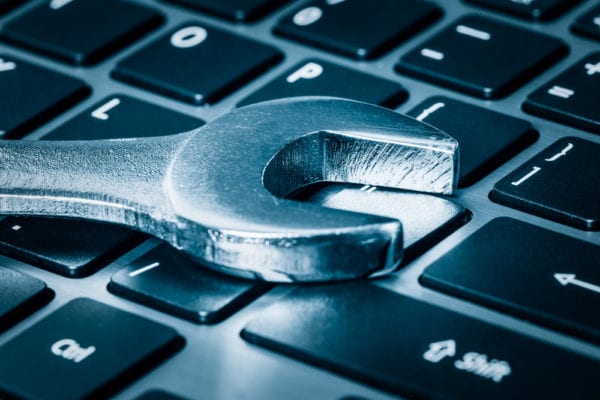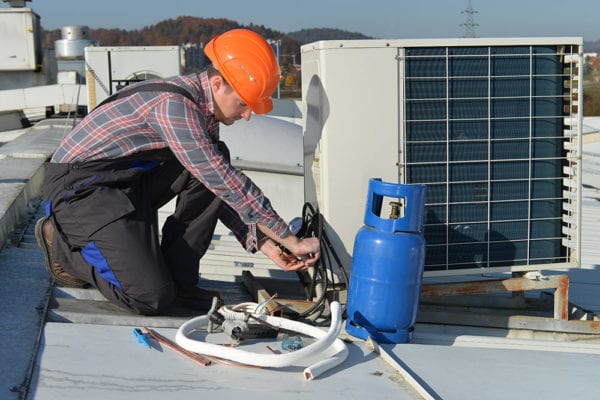
Maintenance is a team effort. The success (or failure) of a computerized maintenance management system (CMMS) affects numerous departments and employees across the organization. Therefore, it is important to select a CMMS that will meet everyone’s needs. A strong CMMS implementation team comprised of key stakeholders provides additional and different viewpoints, opinions, experience, and suggestions to the buying process. This article provides an overview of which stakeholders in the CMMS buying process to consider.
Get to Know your CMMS Stakeholders
CMMS stakeholders are individuals, groups, or organizations impacted by the outcome of a project – in this case, the purchase and implementation of a CMMS. Depending on the organization, there can be multiple individual stakeholders or stakeholder groups.
For each stakeholder to include in the CMMS buying process listed below, think about the role they play in maintenance management, how they will be impacted by the CMMS, and why they need to be involved in the purchase decision. Note that the scope of this article covers a broad range of roles and responsibilities. The mix of stakeholders is unique to each organization, and not every organization will have each stakeholder role.
Maintenance Managers
Maintenance managers are responsible for the upkeep of assets, as well as using monetary and human resources responsibly. They must be able to handle maintenance planning, purchasing, personnel, inventories, technical problems, and budgets. Their job primarily consists of planning and organizing actions to resolve maintenance problems.
Maintenance managers have many concerns. First, they want to make sure their team has adequate “wrench time” and is not spending too much time on a computer navigating cumbersome software. Second, they want a system that will make their job easier by automating many administrative tasks related to data entry, planning, scheduling, and tracking maintenance activities. Lastly, maintenance managers want to be able to demonstrate that their maintenance program is making a difference by being able to generate reports that show improvements.
Maintenance Planners
Larger organizations have maintenance planners who should be included in the CMMS buying process as well. The planner creates the maintenance plans that the maintenance technicians carry out. This includes scheduling, prioritizing maintenance jobs, and determining when parts need to be ordered. The planner might also put maintenance kits together than include instructions, owner’s manuals, and parts needed to complete specific jobs. This role takes some of the stress off the plate of the maintenance manager, who can focus on delegating tasks, supervising work, and approving work order completion.
Maintenance planners need a system that will help them anticipate demand for maintenance, whether the work is scheduled or unplanned. A CMMS must provide planners with a holistic view of maintenance operations, including assets, parts and materials, labor resources, and vendors and suppliers. The maintenance planner also needs a way to manage important asset documentation and prepare maintenance reports.
Maintenance Technicians
Maintenance technicians have the hands-on role in an organization’s maintenance work. They are one of the primary resources in maintenance management and much of the maintenance budget is allocated to them. Maintenance technicians perform a variety of tasks to install, troubleshoot, repair, and maintain facility equipment, as well as respond to maintenance requests. They are also responsible for documenting the maintenance work they perform, including what tasks were accomplished, what parts and tools we used, and how long they spent on the job.
This group can be the most difficult to get on board when it comes to using CMMS software because it affects their daily routines most. CMMS and maintenance technicians will operate closely together. They want to know if it will be easy or frustrating to use. Because technology is not a focus of their everyday lives, technicians want to be sure that the selected CMMS will make their jobs easier without consuming too much of their time. A CMMS requires that technicians work in a new way, which may cause discomfort. Therefore, adequate training will be vital for adoption of and success with the system.
Executives
Executives oversee the operations and resources of the company, or specific departments in order to drive overall growth. Individuals in senior management positions commonly hold titles that include Chief (i.e., Chief Executive Officer), President (i.e., President, Vice President) or Director (i.e., Director of Manufacturing). Senior managers are responsible for taking the actions necessary to hit organizational goals. This involves making strategic decisions based on information they receive from their departments, plants, or locations.
As approvers of large expenditures, executives should champion the project to the organization and commit to providing the necessary resources. Since senior management is “footing the bill”, they are most interested in the ROI of the CMMS system. They want to see how the CMMS will fit into the big picture and impact the organization in a positive way. Managers of other systems want to be sure it is compatible with the organization’s other software such as purchasing.
They want to know that the system will be used because they are providing the resources for the system. Senior management seeks to ensure activities are performed in a standardized way and receive information from their plants in a standardized format.
Facility, Operations, and Plant Managers
Facility, operations, or plant managers are usually an assistant to the organization’s president, general manager, or CEO. They oversee the logistics of many departments and in many areas, from purchase orders to maintenance management to production. They often supervise job sites and production areas, and mitigate problems as needed when employees require assistance.
Each of these roles is involved in the process because of their prior experience with business process automation software. They will interact with the system through service requests. Using the system will affect how they communicate with the maintenance team, asset availability, and maintenance scheduling (knowing when maintenance has been scheduled), along with compliance. They need to make sure maintenance processes are being followed and documented. Facility and operation managers are not concerned with the specific CMMS system that is chosen as long as it allows the maintenance team to provide them with the information they need.
IT Management
The IT department is responsible for overseeing, implementing, managing, and maintaining the company’s information technology, infrastructure, and configuration functions. They also research strategies and solutions to deliver cost-effective and efficient information system. In addition, their department manages software licenses and company data, administers databases, and provides technical support to the organization.
This department is a stakeholder in the acquisition of a CMMS because they are responsible for ensuring that the hardware and software infrastructure is adequate for installing and maintaining the CMMS. The IT manager ensures that resources representing business interests are involved in the process, and the appropriate methodology of the department is adopted. They make it a priority to find out what they need to do to run the software, and want to know if the CMMS system chosen will meet technical requirements. The IT department wants to make sure the software’s technology is future-proof.
Accounting
The accounting department manages all of the money that goes into and out of the organization. From creating invoices and making sure they get paid to balancing corporate bank accounts to managing payroll. Accounting keeps the organization financially sound. This team has insight into the organization’s budget. Aside from the maintenance budget, accountants will be able to work with controllers to help determine how much of the total funds can be allocated to the CMMS implementation process. This includes not only the purchase price of the software, but implementation, training, and ongoing costs as well.
The accounting department is responsible for communicating the organization’s overall budget, but in this case, the budget for the CMMS purchase. While the budget is not set in stone, they will participate in an exploratory process of collecting prices from vendors. Maintenance management provides these prices to the accounting department, and they determine which vendors will fit into the budget plan.
Accounts receivable clerks and purchasing agents want to know how the CMMS will tie in to purchase orders for products. Their concerns are related to inventory management, purchasing, and paying for inventory. They would like to be able to provide quotes and invoices directly from the CMMS system.
Controllers
The role of the controller in purchasing CMMS software is similar to the accountant, but more focused. They usually report to a CFO and are responsible for the organization’s budget. Controllers ensure that funding is available for capital purchases, such as CMMS software, and that funding gets approved. They are able to pinpoint any potential obstacles or areas that might lead to excess costs that fall outside of the budget.
The cost controller in a manufacturing environment measures actual performance against target costs, determining whether or not this goal is being achieved. The person in this role wants to know the positive and negative effects of a CMMS on costs. He is also interested in the potential ROI the system will bring, and if the CMMS can help to lower production costs by improving asset uptime.
FTMaintenance Meets the Needs of Every Stakeholder
FasTrak SoftWorks, Inc., provider of FTMaintenance CMMS, has been providing automation software to industrial companies for over 30 years. Based on our extensive experience, we understand the needs of all CMMS stakeholders, from maintenance technicians to corporate executives. FTMaintenance provides a complete maintenance management platform that satisfies the needs of all maintenance stakeholders. Request a demo to learn more about how FTMaintenance can help your organization.







Recent Comments